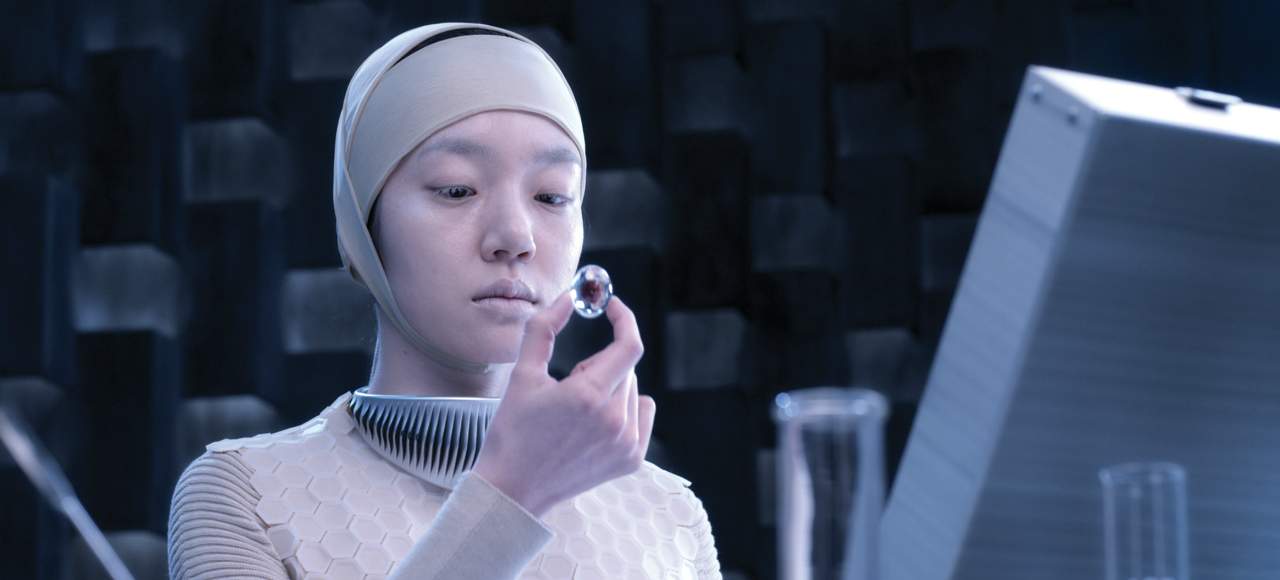What Does It Mean To Be Post-Human? Inside MCA's 'New Romance' Exhibition
Contemporary artists from Australia and Korea give you a glimpse into the future.
In partnership with
Step into New Romance: art and the posthuman at the MCA and you'll be greeted with a dizzying array of moving parts, flickering lights and a casual spot of time travel. Splicing science and technology with politics and aesthetics, 18 artists from Australia and Korea conceive of the distant and not too distant future in this just-opened exhibition.
But New Romance is not simply a celebration of quirky technologies — however seductive they may be. Many of the featured works stimulate discussion around the ethical responsibilities underpinning new ideas.
This exhibition contemplates the future of our bodies and brains, the intersections between artificial intelligence and inanimate objects, and the foreboding path from climate change to catastrophe. Ultimately, New Romance is poised before the forked road leading to utopia, on the one hand, and dystopia, on the other. It's our choices that split the two.
Sounds pretty hectic huh? To help you navigate through this complex exhibition, we've plucked out five key themes that will get your mind cogs moving.
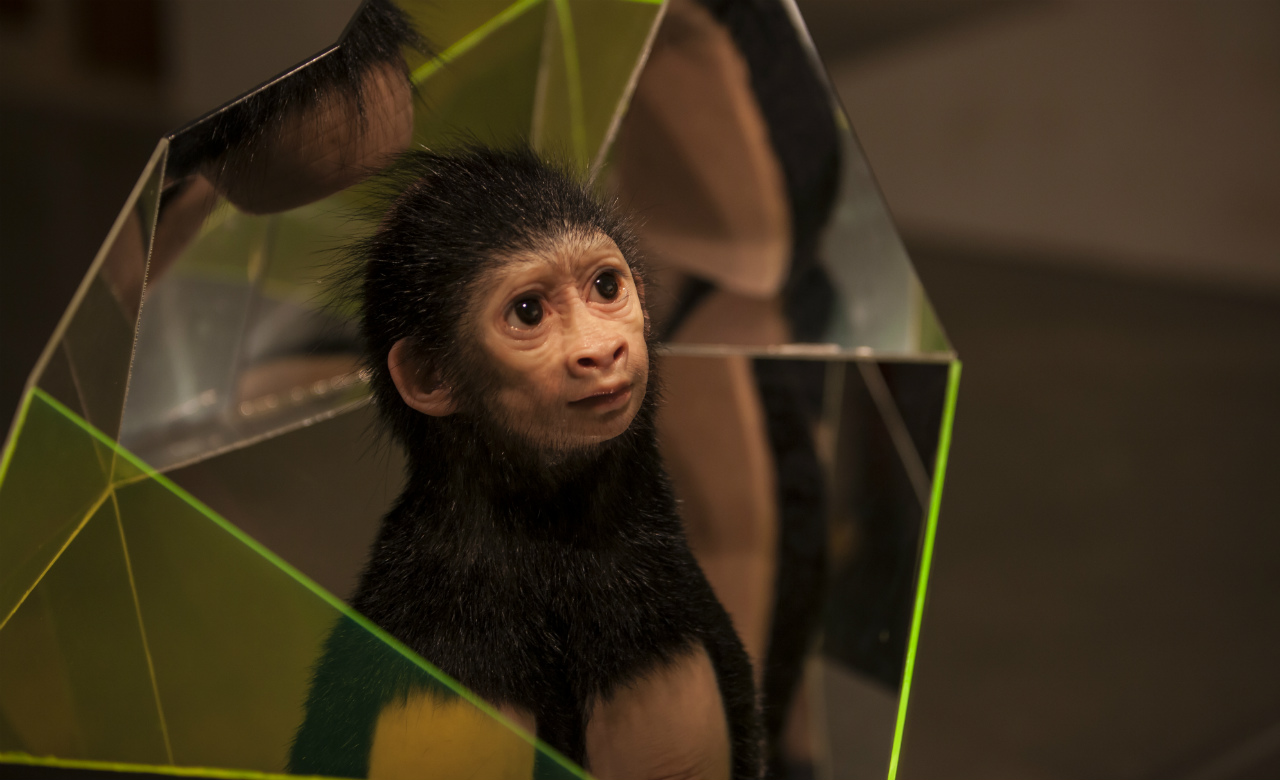
BIOETHICS AND AGENCY
In the relentless quest for improvement and efficiency, we're seeing the development of exciting new technologies — or so-called disruptive technologies. Of course, when inventors and innovators are faced with decisions that may change the collective path of humanity, the future becomes a moral minefield.
Anticipating an era of ethical complexity, Patricia Piccinini and Peter Hennessey's installation, Alone with the Gods (2016), is like stumbling upon a scene from a science fiction film. Featuring all the fleshy mutations you would expect from Piccinini, part of the MCA has been transformed into a makeshift bomb shelter. There are strange crystalline gardens growing out of punctured furniture and grotesque experiments in biotechnology. These futuristic oddities are set amongst a creepy and cult-ish living room, which appears to be the headquarters of a secret society. Rather than blueprinting a progressive new world, Piccinini and Hennessey create an ominous vision of what could be, aiming to evoke an emotional and visceral response from the viewer.
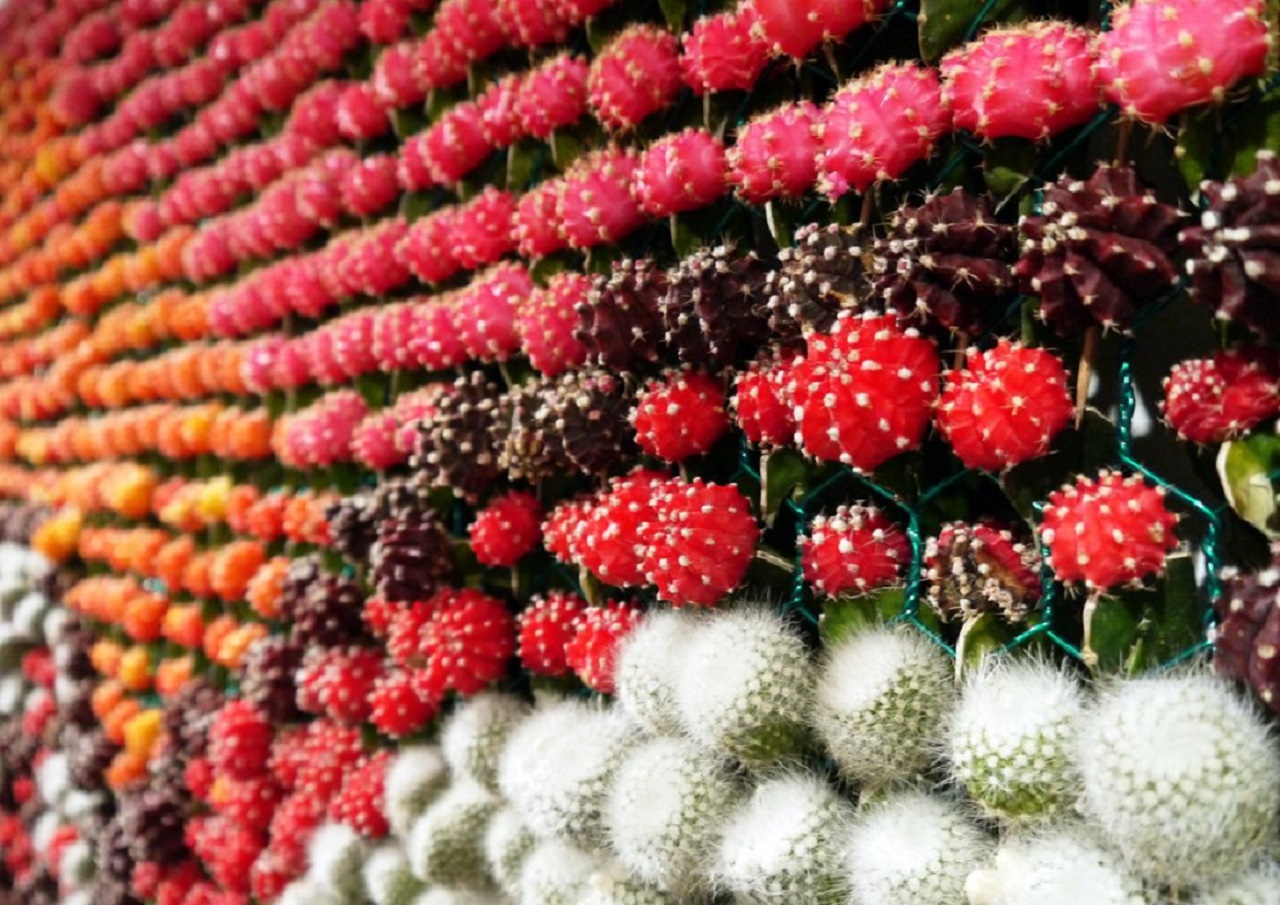
TRANS-SPECIES AND HYBRIDISATION
When it comes to genetics, it could be argued there seems to be a set of preordained rules in this society of ours determining which living things should be combined and which should not. The darker underbelly of hybridisation comprises the stuff of H.G. Wells' The Island of Dr Moreau. Yet even today, agricultural processes of selective breeding and genetic modifications are often treated with suspicion. These attitudes hinge upon an implicit sense of when a line is being crossed — what is too 'unnatural' for us?
Jumping into the spiky world of succulents, Soyo Lee explores the social paradoxes surrounding hybridisation. Ornamental Cactus Design (2013–16) is a research-driven project that follows Korea's massive cactus export market, and in particular, the weird history attached to the famous breed of moon cacti. Concocted in the less than tropical climate of Korea, the unique plant was originally developed to appeal to European markets. However, the cactus cannot photosynthesise on its own and must be joined with another plant in order to survive. Lee's project dwells on why some hybrids are deemed more attractive than others. While cross-species experiments in the animal world are typically greeted with moral outrage, Korea's mutant cacti are seen to be aesthetically pleasing and highly marketable.
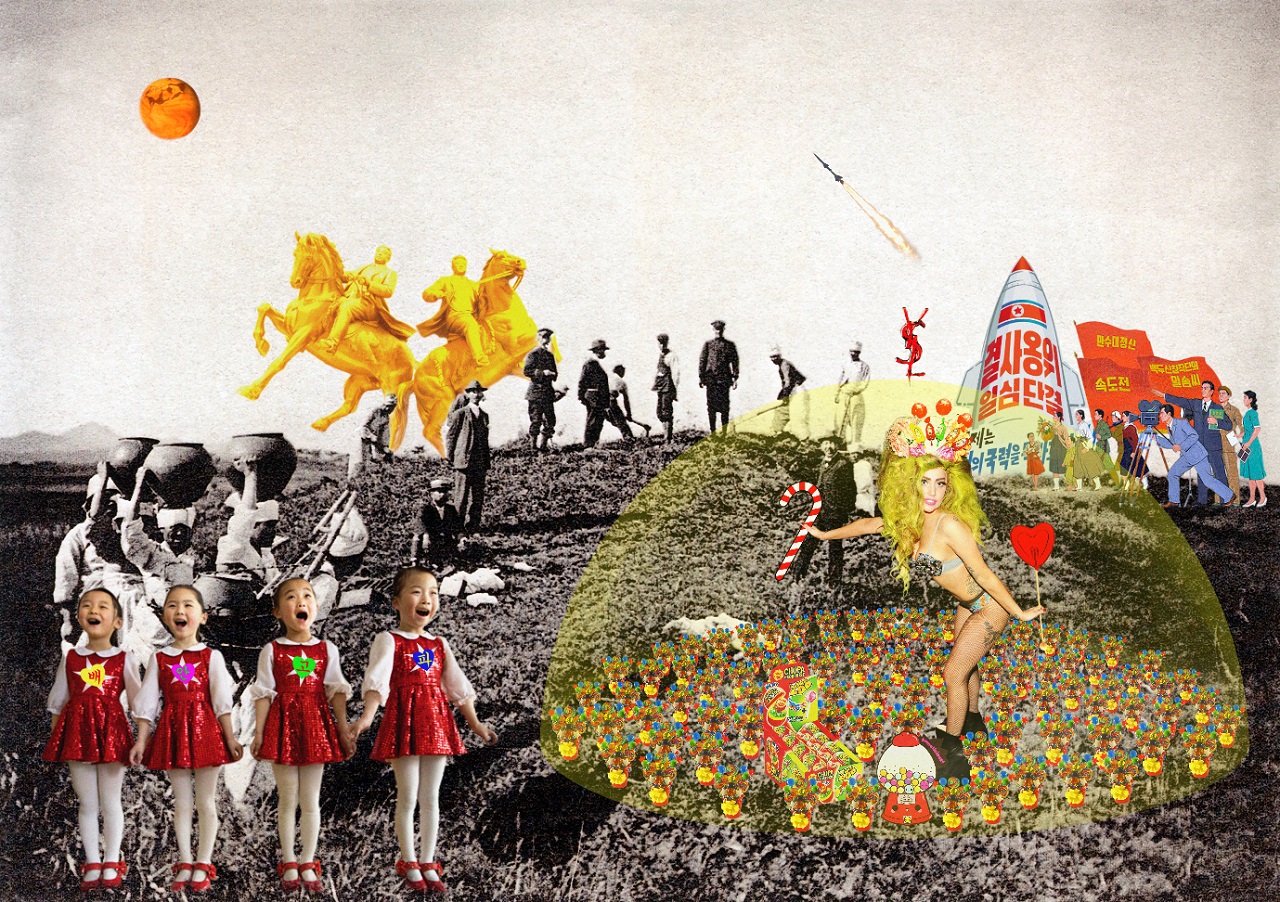
HYPER-CONSUMERISM
Frederic Jameson wrote that it's easier to imagine the end of the world than the end of capitalism. This may very well be true, as the bulk of disaster movies manage to depict post-apocalyptic situations with relative ease, yet capitalism is the ball and chain that won't budge. And as evidenced by the Great Pacific Garbage Patch, it seems we are consuming more and more 'stuff' into the 21st century. Are we inevitably evolving into a hoard of hungry consumers with an insatiable appetite for fast fashion and shiny gadgets?
Sanghyun Lee's work, We Are Not Hungry (2014), focuses on the politically volatile division of Korea. Often regarded as one of the world's most capitalist societies, Lee traces the modern materialism of South Korea from the Japanese occupation. Using historical paintings, he substitutes certain elements for video game characters and K-Pop stars — mapping a sense of social and cultural evolution. This form of digital manipulation has been described as a kind of plastic surgery, reflecting the country's obsession with cosmetic enhancements. Of course, Lee also addresses the radically different society that lies across the divide. Turning an imaginative eye toward North Korea, he recreates the authoritarian aesthetics of one of the world's most closeted regimes with a sprinkle of colour and popular culture. While reconciliation or reunification is not on any near horizon, Lee highlights a collective sense of yearning that unites North and South.
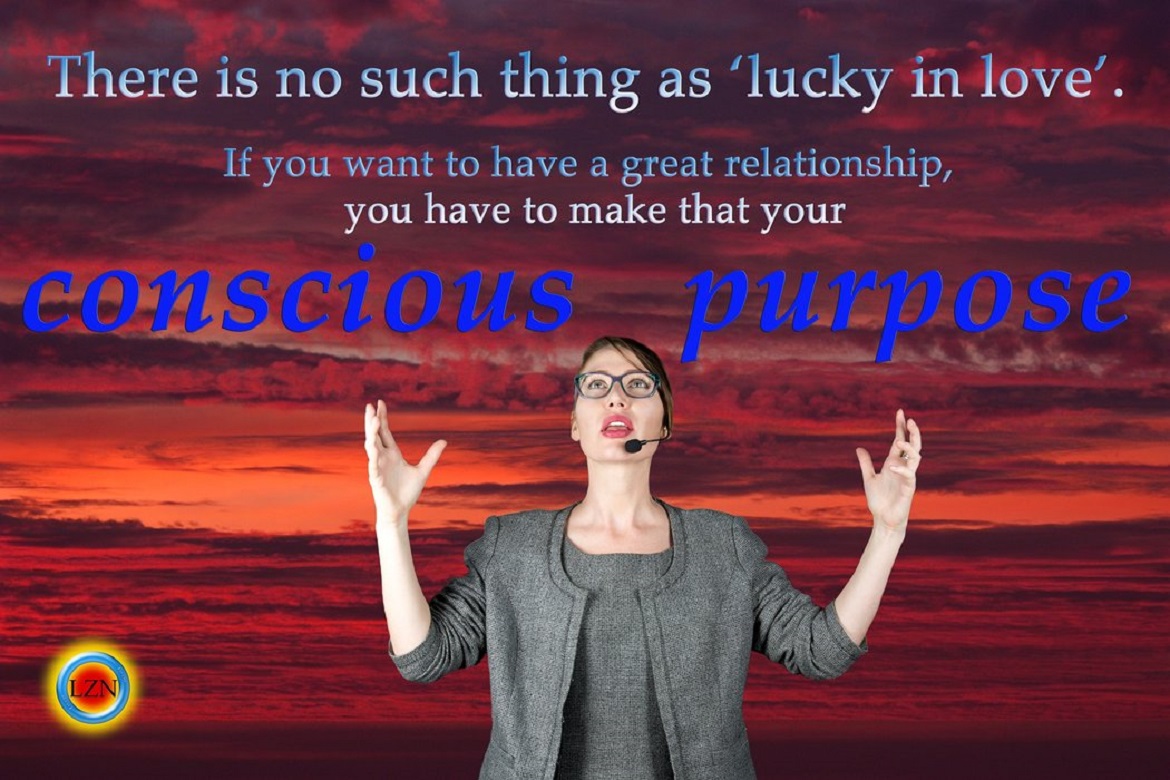
SOCIAL NETWORKS
In the midst of the continually shifting landscape of labour, what we do for a good time has become big business. While social media has transformed the way we interact, our data is being continually harvested by companies in order to build an accurate picture of our tastes, habits and preferences. It seems privacy is a privilege confined to the past, and the power wielded by social media companies is neatly veiled by a friendly thumbs up. This begs the question, to what extent do we expect technologies to construct our personal lives and sense of self?
With a refreshing dose of cynicism, Giselle Stanborough's Lozein: Find the Lover You Deserve (2016) takes on the colonisation of our social activities by the likes of Google and Facebook. Channelling the style of a TED Talk, the artist conducts a series of performance lectures. Advertising a fictional matchmaking service, she deploys the persuasive language and branding of the leisure economy — often used to reel in the lonely and lovesick client. Of course, as Stanborough's project suggests, convenience does not guarantee a meaningful experience. And while high-tech 'solutions' are readily dispensed, we may be still articulating the problem. In her final lecture on August 18, Lozein Analytics, Giselle will reveal her insights on what Lozein user behaviour can tell us about our relationships with technology and each other.

ALTERNATIVE FUTURES
The much cited prediction that we are faced with our last opportunity to do something about climate change is a scary one. In cultural circles, there's a definite fascination with the Anthropocene — the point at which humanity fundamentally and permanently alters the Earth's geological properties. What is becoming increasingly apparent is that a failure to act — not zombies — will be the catalysing force of global decline.
Hayden Fowler's large-scale installation, Dark Ecology (2015 - 16), in the MCA Forecourt paints a regressive vision of humanity. Inside a plastic biodome, there are stagnant puddles of dark water and dead branches — the remnants of a failed civilisation. The folly of the structure is that it was evidently unable to guard against degradation and decay. At various intervals, Fowler and his assistants conduct performances within the biodome. From inside the gallery, you can catch a glimpse of some of the details within the structure on CCTV. While Fowler's work is a vision of what might come to pass, it is patently a plea for action.
New Romance: art and the posthuman runs Thursday, June 30 to Sunday, September 4 at the Museum of Contemporary Art, 140 George Street, The Rocks and is open until 9pm on Thursday nights. Entry is free.
